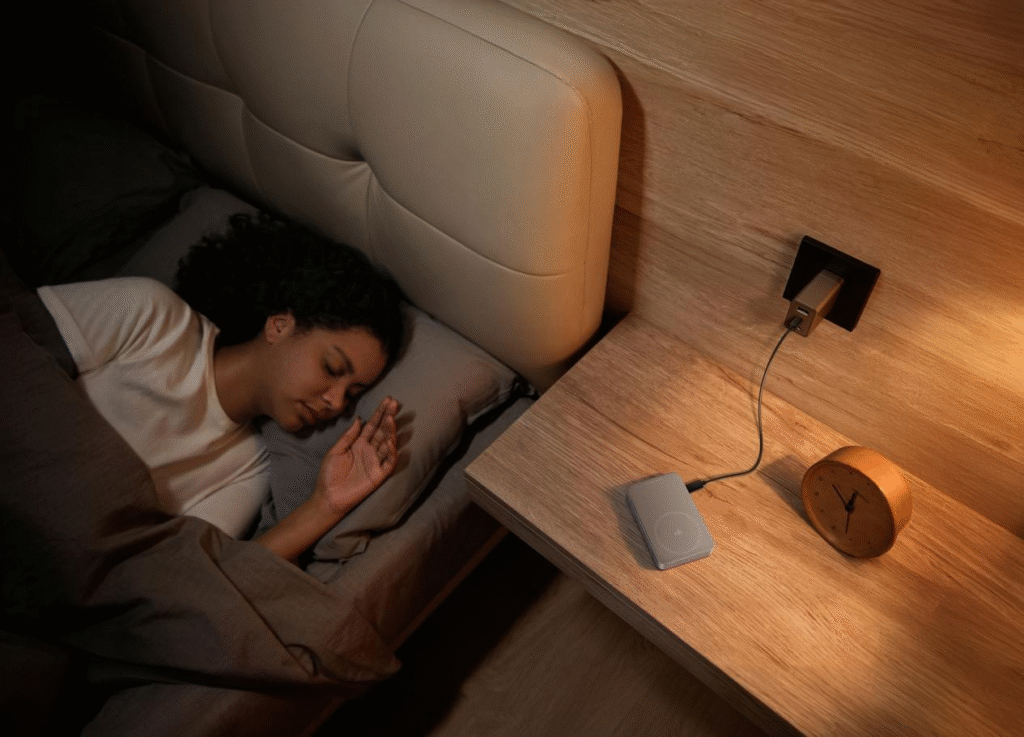Does Solar Energy Destroy Phone Batteries? Full Guide (2025)

Does solar energy destroy phone batteries? Learn how solar charging affects phones, battery health, and safety. Discover pros, cons, and expert tips to extend battery life
Introduction
Smartphones are now essential, and solar charging is gaining popularity as a sustainable solution. But many ask: Does solar energy destroy phone batteries? The short answer: No, solar energy itself doesn’t directly damage your phone’s battery—but improper solar charging setups, poor-quality solar chargers, or overcharging can shorten battery life.
In this guide, we’ll break down the truth, myths, and best practices about solar charging and phone batteries.

Destroyed Phone Battery
Understanding How Phone Batteries Work
Most modern phones use Lithium-ion batteries, which degrade naturally over time due to charge cycles, heat, and overcharging.
What destroys a phone battery the fastest?
- Overheating from direct sunlight exposure
- Using cheap or unstable charging equipment
- Letting the phone drain to 0% repeatedly
- Overnight charging without battery protection
So, if you’re using solar power incorrectly—like plugging directly into unstable panels—it can cause voltage fluctuations, which harm the battery.
Does Sun Damage Phone Batteries?

Sun Damage Phone Batteries
Direct sunlight can heat your phone excessively, which is worse for the battery than solar charging itself. Lithium-ion cells degrade quickly in high temperatures.
- Solar radiation effect on phones: Heat + UV rays can reduce phone performance.
- Does the sun drain a phone battery? Not directly, but overheating forces the phone to use extra energy for cooling.
Is Solar Good for Charging a Phone?
Yes—solar is safe for charging phones if you use a reliable solar charger or power bank.
Best Practices for Solar Charging:
- Use a solar power bank instead of connecting directly to a solar panel.
- Ensure proper voltage regulation (5V USB standard).
- Charge during moderate sunlight, not extreme heat.
- Keep your phone in the shade while charging.
Common Myths About Solar Charging and Battery Health
| Myth | Reality |
| Solar energy destroys phone batteries | False – Poor charging equipment causes damage, not solar itself |
| Solar panels overcharge batteries | Most solar chargers have regulators to prevent this |
| Dark mode doubles battery life | It saves some power but doesn’t stop battery aging |
| Airplane mode makes batteries last forever | It only reduces network drain, not battery wear |
What Can Kill Your Phone Battery Faster Than Solar?
- Keeping your phone at 100% constantly
- Using cheap charging cables
- High brightness outdoors
- Background apps and GPS
- Charging with unstable inverters
Tip: If you’re asking, “How do I keep my battery 100% healthy?” → Keep charge between 20%–80%, avoid extreme heat, and use certified chargers.
What Destroys a Phone Battery?
It’s not solar energy—it’s poor charging habits. Common culprits include:
- Overcharging the phone constantly.
- Using cheap or faulty chargers.
- Keeping the phone at 0% or 100% for long periods.
- Exposure to extreme heat or cold.
- Background apps are draining power.
Poor Charging Habits That Damage Phone Batteries

Poor Charging Habits
Leaving your phone connected after a full charge keeps sending small current surges that degrade the battery.
Keeping Phone Plugged in Overnight
Overcharging stresses the battery and can cause it to heat up, reducing its long-term capacity.
Letting Battery Drain to 0% Frequently
Modern lithium-ion batteries prefer partial charges. Going from 100% to 0% often shortens their lifespan.
Always Charging to 100%
Topping up to full every time puts strain on the battery. Ideally, keep the charge between 20%–80%.
Using Cheap or Fake Chargers
Low-quality cables and adapters deliver unstable current, which can overheat or damage the battery.
Using the Phone While Charging
Gaming, streaming, or calling during charging creates extra heat, which kills battery health faster.
Fast Charging Too Often
While convenient, constant fast charging increases battery temperature and reduces long-term performance.
Exposing Phone to Heat While Charging
Charging in direct sunlight, in a car, or under a pillow traps heat and damages the cells.
Not Unplugging Power Banks or Inverters
Solar Power Banks vs Direct Solar Panels
| Feature | Solar Power Bank | Direct Solar Panel Charging |
| Voltage Stability | Stable (regulated 5V) | Unstable without regulator |
| Safety | Safe for phone batteries | Risk of over/under charging |
| Portability | Easy to carry | Panels are bulkier |
| Charging Speed | Moderate | Depends on sunlight |
Verdict: Always go for a solar power bank if you want safe solar charging for phones.
Comparison: Solar Charging vs Wall Charging for Phones
| Feature | Solar Charging | Wall Charging |
| Power Source | Renewable (sunlight) | Electricity (grid) |
| Portability | Highly portable with solar power banks | Relies on fossil fuels (unless a renewable grid) |
| Charging Speed | Limited, requires a power outlet | Faster (1–2 hours with fast chargers) |
| Battery Safety | Safe if regulated; risk with cheap panels | Safe with certified chargers |
| Cost Over Time | Free once you buy solar equipment | Ongoing electricity costs |
| Eco-Friendliness | 100% green and sustainable | Relies on fossil fuels (unless renewable grid) |
| Best For | Outdoors, travel, emergencies | Daily home/office charging |
Pros of Charging Phones with Solar Energy
- Portable and Convenient
- Solar power banks and panels are lightweight, making them ideal for camping, traveling, and outdoor use.
- Cost-Saving in the Long Run
- Once you buy a solar charger, the energy is free. Over time, this reduces electricity costs.
- Safe with Quality Chargers
- Eco-Friendly Power Source
- Solar energy is clean and renewable, helping reduce dependence on fossil fuels.
- Good solar chargers include voltage regulators that protect phone batteries from overcharging or short-circuiting.
- Eco-Friendly Power Source
- Reliable Backup in Emergencies
- Works during blackouts or in remote areas where grid power isn’t available.
Cons of Charging Phones with Solar Energy
- Slower Charging Speed
- Charging a phone can take 2–6 hours, depending on sunlight, much slower than wall charging.
- Risk from Cheap or Low-Quality Panels
- Inconsistent voltage can damage or reduce the lifespan of batteries.
- Sunlight Dependency
- Performance drops on cloudy days, at night, or indoors, making it unreliable as the main charging source.
- Overheating Issues
- Direct sunlight on phones while charging may heat the battery, causing faster wear.
- Not Ideal for Daily Fast Charging
- Solar charging is better for emergencies or occasional use, not as a replacement for your regular wall charger.
Conclusion: Does Solar Energy Destroy Phone Batteries?
Solar energy doesn’t destroy phone batteries—it’s how you charge that matters. Direct sunlight, cheap solar panels, or unstable voltage can shorten your phone’s battery life. But with the right solar charger or solar power bank, your phone battery will remain safe and healthy.
Final Tip: If you want long-lasting battery health, use regulated solar chargers, avoid overheating, and maintain charge between 20–80%.
Want reliable solar charging solutions that protect your devices? Explore expert-recommended solar power systems today and keep your gadgets safe, efficient, and eco-friendly.
FAQs – Solar Energy & Phone Batteries
Yes, direct sun exposure can overheat and shorten battery life.
A 20W panel can charge a phone in 2–4 hours, depending on sunlight.
Yes, if you use an MFi-certified solar charger or power bank.
Yes, as long as the panel has a charge controller to regulate output.
It’s only bad if the charger has unstable output, which can lead to inconsistent charging cycles and stress your battery.
